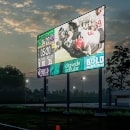IP Ratings
You’re researching digital displays. Once you reach the technical specifications, your eyes start glazing over. Pixel matrix. Resolution. Cabinet design.
What does all of this information mean? Which features help you pick out the best displays for what you need?
Let’s take IP ratings as an example. All of these digital displays have an IP something listed. Is a higher number good, or a lower number? What does IP even refer to?
IP is an acronym for Ingress Protection. The ratings, sometimes referred to as the IP Code, tell you what the display’s enclosure has been manufactured to withstand, whether it’s against solid objects, dust, or liquids.
According to Rugged PC Review, IP ratings are also the International Electrotechnical Commission 60529 standard across the globe for classifying the level of protection in all electrical components.
IP Ratings are Important Information
If it’s been a while since you looked at digital displays, you may remember they were shielded from conditions before with bulky equipment that caused a lot of headaches. Within the past few years, it’s become possible to set up digital displays outdoors without all of that extra load.
Now displays are protected just by their casings. The IP rating tells you how well the display enclosure is able to protect the delicate electronic components that make displaying your content possible.
It is possible to encase a standard TV or similar display with additional protection, but a digital display manufactured for the purpose of operating in extreme conditions will probably serve you better and longer.
What This Tells You About the Display
The great thing about IP ratings is they tell you exactly how a digital display can be used. You can see a chart explaining each number for both solids and liquids here.
If you plan on installing your LED or LCD display indoors, you may not be very concerned about liquid protection. However, protection from solids may be very important to you, especially if the environment contains a lot of dust.
For those planning on using a digital display outdoors, you may only be concerned about your display making it through the occasional downpour. A display near the ocean or used in marine applications requires an even higher rating.
Choosing Your New DisplayOnce you’ve deciphered LED IP ratings, you’ll have a good idea of what is the minimum you need for how you’ll use your digital display. And that means you’re one large step closer to finding the best choice for your company.










